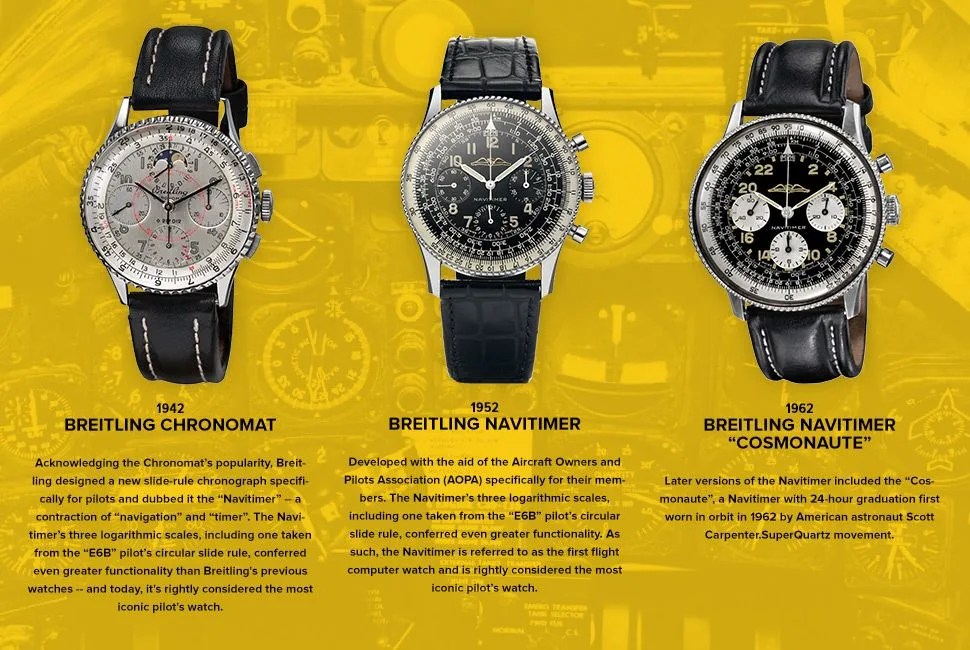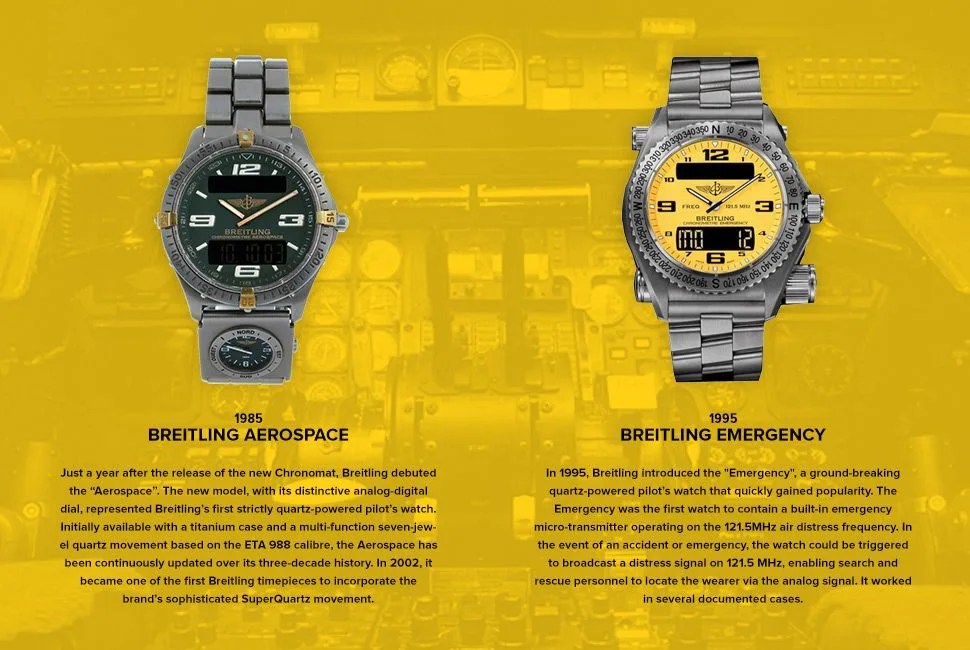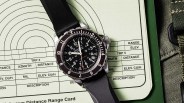Step foot on the tarmac at Edwards or the flight deck of the USS Ronald Reagan and you’re likely to see a few Breitling watches on the pilots’ wrists. A Breitling on the wrist is as much a part of standard aviator kit as the ubiquitous and eponymous aviator shades. The “terrific wristwatches” with their “two thousand calibrations on them and dials for recording everything” that author Tom Wolfe refers to in The Right Stuff, his chronicle of the early days of the jet age, was probably a Breitling.
But Breitling’s connection with pilot’s watches is more than a historical footnote or a well-branded, retro-inspired line of heritage watches. The brand has won pilots’ favor over the decades due to the functionality and rugged build of the watches themselves, which have evolved over time as much as the planes the pilots are flying.
Breitling began to supply “onboard chronographs” for aircraft in the late 1930s. The Royal Air Force was a customer, tapping Breitling to produce analog cockpit clocks for RAF icons like the Spitfire fighter and Lancaster bomber. During the aviation boom following WWII, Breitling continued to produce onboard chronographs for manufacturers including Boeing, Lockheed and Douglas. Breitling-Wakmann instrument panel-chronographs (produced in partnership with New York watch/clock importer and distributor Wakmann) became as familiar to pilots as Breitling’s wristwatches. Not surprisingly, the two also produced Wakmann-Breitling wristwatches from the 1950s through the 1970s.
By this point Breitling had cemented itself as a pilot watch standard for fliers themselves. But the evolution of their watches can’t be properly considered without first referencing the renowned “Chronomat”.

Combining Breitling’s pioneering chronograph developments (independent push pieces for start/stop and reset functions) with a “circular” slide rule, the Chronomat wasn’t designed for aviation applications. In fact, it wasn’t even the first slide-rule wristwatch, strictly speaking. Fellow Swiss maker Mimo-Loga is said to have patented its example in the summer of 1940, just a few weeks before Breitling applied for its own patent.
But the utility of the Chronomat — developed for timing and financial calculations with scientists, engineers and mathematicians in mind — was quickly recognized by military men, including pilots, after it went on sale in 1942. Its two-scale slide-rule functionality allowed flyers to calculate time, speed, distance and even fuel consumption.


